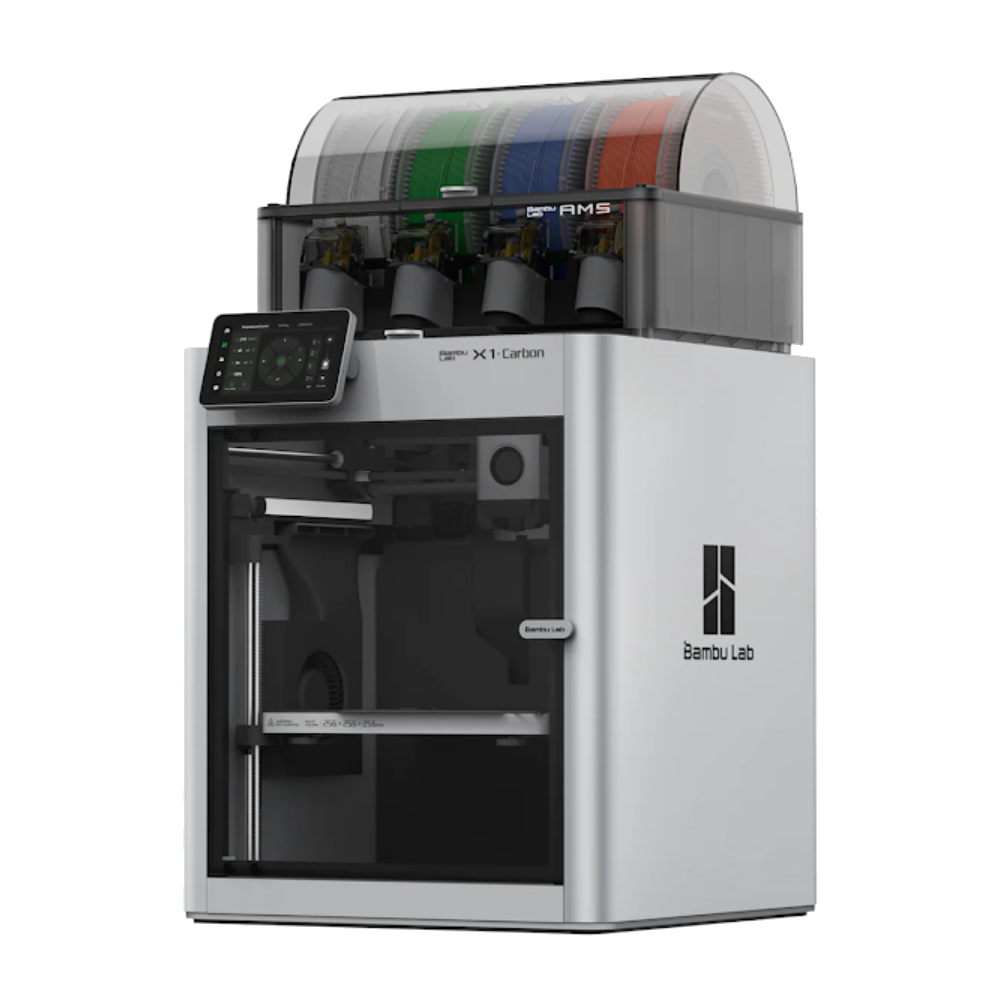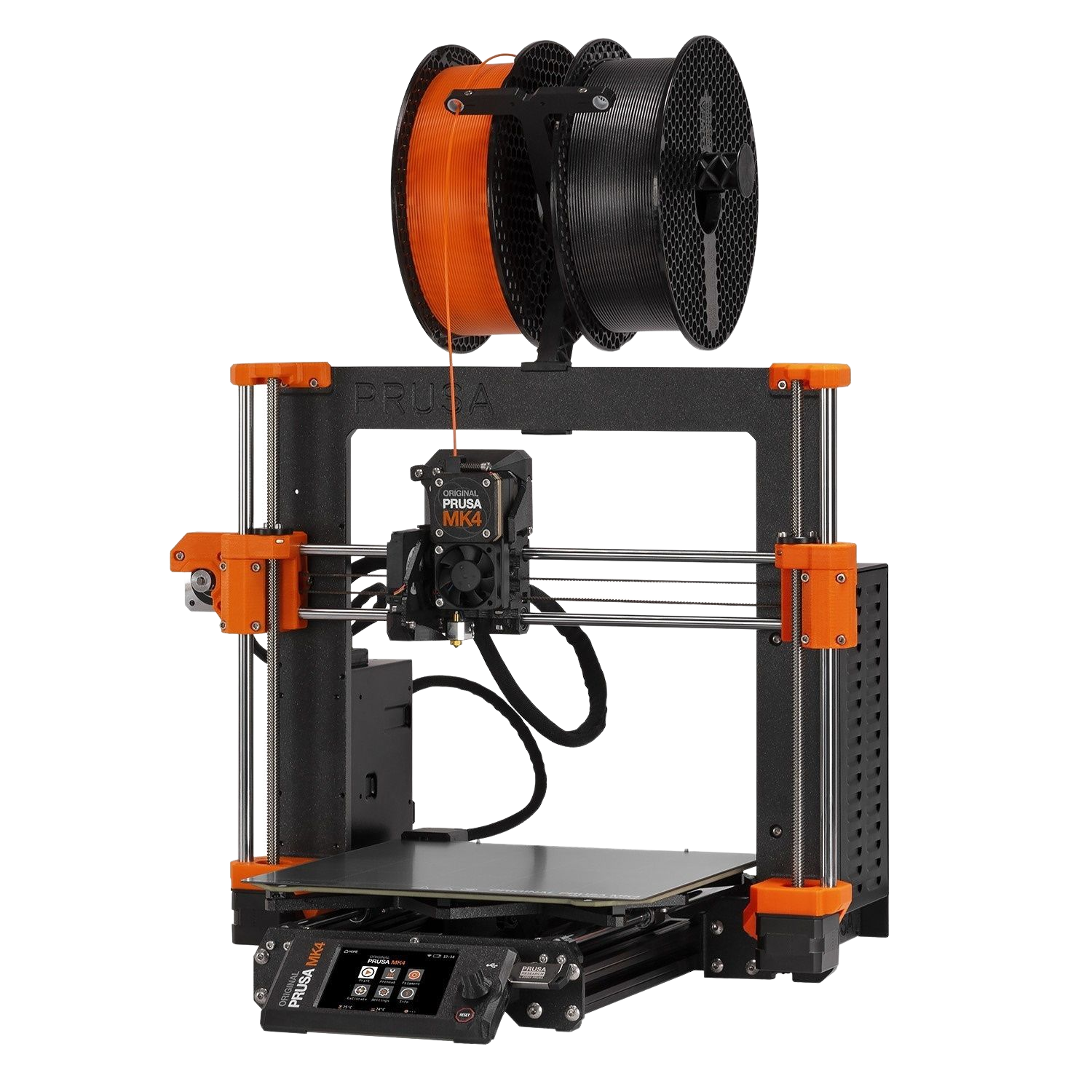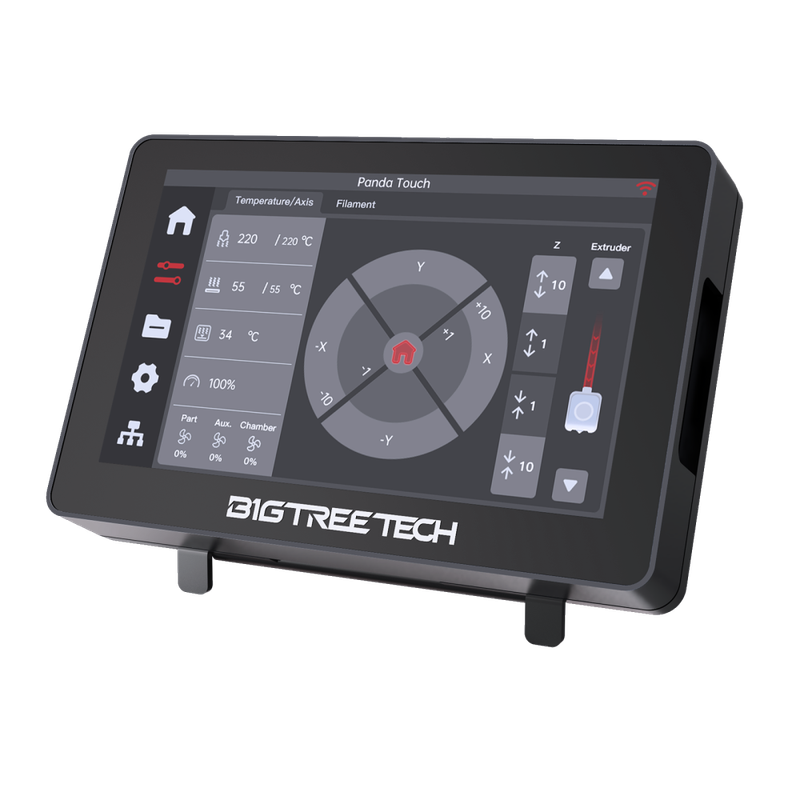If you make a purchase using a shopping link on our site, we may earn a commission. Learn More

Bambu Lab X1 Carbon Combo
About the Bambu Lab X1 Carbon Combo
The Bambu Lab X1-Carbon is a premium 3D printer that offers extremely fast print speeds, an enclosed build chamber, and automated calibration and monitoring features enabled by AI vision and Lidar sensors. The X1-Carbon pushes the envelope of both performance and ease of use for consumer FDM 3D printers, making it a compelling choice for users who are willing to pay for a higher-end machine. The X1-Carbon Combo includes the Bambu Lab Automatic Material System (AMS), which allows the 3D printer to switch between 4 different filament types during the print. This enables multi-color printing, automatic switching when one roll is depleted, or using special breakaway support material. The AMS is an add-on unit that can be purchased separately for the Bambu Lab X1-Carbon, P1P, or P1S, but the X1-Carbon Combo bundles the X1-Carbon and AMS for a lower price. The X1-Carbon has a slightly above-average print volume of 256 x 256 x 256 mm (10" x 10" x 10") and features a direct drive extruder with an all-metal hot end and a hardened steel nozzle, enabling it to print all available filament types. Its CoreXY motion system and advanced firmware features such as pressure advance and vibration compensation allow it to attain print speeds of up to 500 mm/s while maintaining high print quality. One differentiating feature of the Bambu Lab X1-Carbon is the Lidar sensor, which allows it to precisely measure the height of the first layer of the print. This serves as an additional bed leveling calibration tool, but also enables the X1-Carbon to analyze the flow rate of the filament, allowing it to automatically calibrate its extrusion parameters for different filament types. This is a feature we haven't seen on any other consumer FDM 3D printer. In addition, a camera in the build chamber uses AI image processing to detect failed prints. The X1-Carbon has an integrated 5" touchscreen controller, but can also be controlled wirelessly with the Bambu Studio computer application or the Bambu Handy phone app. The apps allow you to remotely monitor and control the X1-Carbon. Files can be loaded wirelessly from the Bambu Studio app, or by using a microSD card. The downsides to the Bambu Lab X1-Carbon are its high price and lack of third-party repair parts. The MSRP of the X1-Carbon is higher than many other 3D printers with comparable key specifications, making it a premium option for buyers who prioritize ease of use and advanced features over affordability. And because of its automated calibration features and custom design, almost all repair parts are sold only by Bambu Lab. Although there is a wide range of repair parts available on Bambu Lab's site, this does mean that the longevity of the X1-Carbon is dependent on Bambu Lab's continued support of the machine. Our overall take on the Bambu Lab X1-Carbon is that its advanced printing capabilities and ease-of-use features make it an excellent option for users who are willing to pay a premium price for one of the highest-end FDM 3D printers currently available. But for users who are just getting started with 3D printing and want to stick to a lower budget, there are other machines which provide excellent print quality at a much lower price.
Benefits of the Bambu Lab X1 Carbon Combo
Modern mainboard features - Many 3D printer features relate to the version of the mainboard and firmware, including features like resuming prints after a power failure and support for silent stepper motor drivers for quieter printing. Newer boards also include safety features like thermal runaway protection which shuts the printer down if it detects issues with overheating.
Auto bed leveling - auto bed leveling will ensure your prints have perfect first layers every time and greatly reduce issues with bed adhesion. When using an auto-leveling system, the probe allows better tolerances for slightly warped print beds by measuring and compensating for any inconsistencies. Without this feature, you'll need to adjust the bed level manually using nuts on each corner of the print bed.
Large online community - A large online community is important when it comes to any questions that come up as you learn how to use your 3D printer. A larger community typically means that you'll be able to find answers already posted to the most common questions, and you'll be able to find slicing profiles and printable upgrades online.
Has touch screen - having a touch screen isn't a deal-maker or breaker, but it is a convenient feature that makes it easier to navigate the interface when you are printing files and configuring 3D printing settings.
Premium components - This printer is known for using the highest quality components, and prioritizes this over providing a lower price point on their printers.
Fully assembled - This 3D printer is shipped completely assembled, and is ready to plug in and start using as soon as you unbox it. You will still need to follow the included calibration procedures, but this will not take a significant amount of time.
Direct drive extruder - Direct drive extruders are mounted right above the hot end, and push the filament directly into it, as opposed to a side mounted bowden extruder setup. We prefer direct drive extruders to bowden since they are less prone to jamming and typically require less maintenance. they also are much easier to use with flexible materials
PEI build surface has good balance of adhesion and part removal - PEI beds are one of the more premium build surface options, and for good reason. They offer great first layer adhesion with no spraysor other treatments, and can be flexed to quickly remove parts. You'll need to clean the bed with a solvent like acetone or IPA every so often to maintain the bed's adhesion.
Generous Build volume - A larger than average build volume means that you will be able to print larger parts without the need to split them into pieces and attach them together, which is especially useful with functional parts. If you have the room for the larger footprint, we definitely recommend going with a larger 3D printer, since you can always print small parts on a larger printer.
Wireless printing - In addition to the standard USB and SD card connections, you can connect wirelessly to this printer to print from your computer or mobile device.
All-metal hot end - An all-metal hot end allows for printing at high temperatures up to 300C, while standard hot ends are capped at 260C before the PTFE material begins to degrade. All-metal hot ends are also less susceptible to jamming, and do not degrade as fast.
CoreXY Kinematic System - A CoreXY 3D printer kinematic system uses two stationary motors to move the print head in the X and Y directions, resulting in faster and more precise movements compared to traditional printers. By separating the movement of the print head from the movement of the build plate, the CoreXY system is able to avoid the added weight and momentum of a moving build plate. This results in less vibration and better control of the print head, allowing for faster and more precise movements. Additionally, the CoreXY system can print at higher speeds compared to H-bot systems because it only needs to move one motor for each axis of movement, reducing the overall weight and inertia of the system.
Enclosure - An enclosure seals air around the print area. This holds warm, still air around the print area and is essential for printing temperature-sensitive materials like ABS. Enclosures also prevent particulates and gasses from being emitted into the surrounding area, increasing safety. They also greatly reduce printer noise.
Dual gear extruder - A dual gear extruder grips filament from both sides and can exert much more force on the filament before slipping. It helps with all filaments but especially with flexible, slippery TPU.
Linear rail motion system - Linear rails provide added stability to the moving parts of the printer, allowing higher printing speeds without sacrificing quality. Keep in mind that the most important factor to consider when optimizing for print speed is the flow rate of filament, which depends on the hot end and nozzle size moreso than the motion system.
Disadvantages to consider
High price tag - While this printer includes a lot of premium features, they come with a price. This printer is one of the more expensive consumer printers, and may not be worth the cost if you are willing to sacrifice some of the high end features.
Limited Third-Party Repair Parts - Most repair parts must be purchased from the manufacturer, requiring you to rely on the manufacturer to continue to support the machine as long as you own it.
Where to buy the Bambu Lab X1 Carbon Combo
Click here to view the Bambu Lab X1 Carbon Combo on Matterhackers.
Brand Summary: Bambu Lab
Bambu Lab, founded by ex-DJI engineers in Shenzhen, has made waves in the 3D printing industry with its focus on speed, innovation, and user-friendliness. While it began its journey through a successful Kickstarter campaign, raising $7 million in a month, the brand has since had its share of growing pains, including shipping issues and firmware bugs. The company's commitment to creating intuitive, precalibrated 3D printers like the X1-Carbon and P1P is commendable, but some users have found limitations with the proprietary components and software. Despite these challenges, Bambu Lab boasts a large community of dedicated users across various platforms and continues to evolve in its offerings and customer service.
Pros
- Modern mainboard features
- Auto bed leveling
- Large online community
- Has touch screen
- Premium components
- Fully assembled
- Direct drive extruder
- PEI build surface has good balance of adhesion and part removal
- Generous Build volume
- Wireless printing
- All-metal hot end
- CoreXY Kinematic System
- Enclosure
- Dual gear extruder
- Linear rail motion system
Cons
- High price tag
- Limited Third-Party Repair Parts
Compatible Accessories and Upgrades
- Bigtreetech Panda Touch
The Panda Touch is a touchscreen controller for Bambu Lab 3D printers made by Bigtreetech, who produces a line of accessories for Bambu Lab's machines. It provides a larger and more functional user interface than the built-in screen on most Bambu 3D printers, and offers additional capabilities for wireless monitoring and print farm management.
Printer Comparisons
The articles below provide in depth comparisons of the Bambu Lab X1 Carbon Combo to other similar printers on the market.
Comparing the Bambu Lab X1 Carbon Combo vs the Prusa MK4


Vs

You can compare the Bambu Lab X1 Carbon Combo to other 3D printers using our Compare tool.
